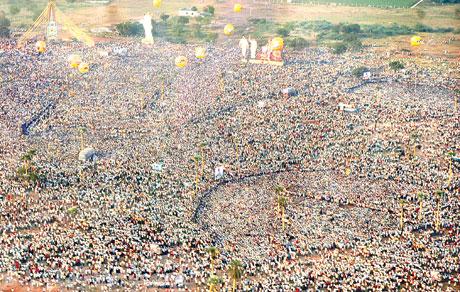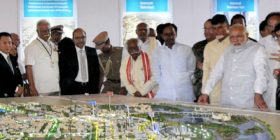PRESUMING THE UPA government gives in to the demand for a separate Telangana state, three issues will merit pondering. First, the creation of India’s 29th state would follow a Congress assessment that it could persuade the Telangana Rashtra Samithi (TRS) into an alliance in the 2014 General Election. Second, the impact of an individual — or rather of his sudden death and absence — would have had astonishing and far-reaching consequences.
The current round of the decades-long Telangana movement began in November 2009 when K Chandrasekhar Rao, chief of the TRS, went on a fast. Just months earlier, the TRS had been drubbed in elections in Andhra Pradesh. Rao was elbowed out of reckoning by the Congress chief minister, YS Rajasekhara Reddy. When Reddy died in an air crash, the Congress lost its strongman and Rao smelt a chance. He went on a fast hoping to assuage his supporters, win back lost ground and embarrass the Congress. Instead, the tumult on the streets, and the new chief minister’s inability to tackle it, led the Union government to panic. A concurrence with the idea of Telangana was hurriedly announced.
In the three years since, the Congress has spent its time explaining away that panic attack and attempting to delay a decision. It appointed the Justice Srikrishna Committee to study the Telangana option. The committee’s report kept one chapter secret because it referred to possible national security challenges arising from a separate Telangana. A covert chapter was the last thing astute politicians would have recommended. It only served to make the atmosphere seem that much more suspicious.
Third, ideally a policy decision — any policy decision — should set a precedent and suggest normative benchmarks for the future. This has not and is not happening in the case of Telangana. There is no clarity as to parameters being considered for statehood. The first State Reorganisation Commission in the 1950s used the criterion of language, sometimes bunching together linguistically similar segments of different states. In the Northeast, especially following the breaking up of Assam in the 1970s, and in the case of Jharkhand and Chhattisgarh in 2000, the logic of ethnicity was used.
For better or worse, both these parameters — language and ethnicity — set a precedent. More recently, assessments of state creation and dismantling of gigantic provinces have focussed on administrative ease — as in the case of the proposal to create four daughter states from Uttar Pradesh. There has also been limited talk of economic viability.
OLD POSTULATES have sometimes been proved right and sometimes quite wrong. There is no uniform rule that small states do well. For every Haryana that is successful, there is a Goa that faces enormous challenges. Jharkhand was cut out of Bihar under the assumption that it was exploited and oppressed by Patna, but being mineral-rich was a likely front-ranker. In the past 13 years, Bihar has moved towards stable, responsible government and Jharkhand has rapidly become India’s basket case.
Taken together, this is a robust and varied experience to draw from. The astonishing thing is none of this has influenced or been used to guide political and public discourse about what to do with Telangana, one way or the other. What are the parameters for statehood in 21st century India? If Telangana is accepted, what are the operative reasons to deny, for instance, Vidarbha liberation from Maharashtra or Harit Pradesh an autonomous existence in what is today western Uttar Pradesh or even Bundelkhand a statehood comprising some of the poorest districts of Madhya Pradesh and Uttar Pradesh? Would those seeking these new entities be turned away only because there is no power vacuum in the state capital in question and because no inept government has allowed a fast and a restive throng to overtake rational decision-making?
Should the UPA leadership announce the formation of Telanagana — or even if it doesn’t — what India surely deserves is a discussion and a broad agreement on the criteria for creation of new states: administrative or fiscal, related to infrastructure or population size, flowing from objective estimates of economic neglect and backwardness or otherwise. The UPA government may think it only owes Telangana a state. Actually, it owes India some answers.






Leave a reply